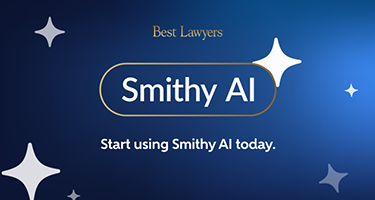IN THE ENVIRONMENTAL, Social and Governance context, regulated entities in the financial and environmental sectors should expect increased enforcement activity as the Biden Administration continues to mature and focus on its core policy initiatives. In particular, the Securities and Exchange Commission, Environmental Protection Agency and Department of Justice are continuing to develop and implement changes to encourage corporate accountability. According to C. Dabney O’Riordan, SEC Co-Chief Asset Management Unit, the SEC has a new task force whose goal is to focus on climate and ESG related issues. The task force is an outgrowth of new investments in corporations, providing a need for the task force to understand the new products and growth as well as to understand the validity and accuracy of disclosures.
Securities and Exchange Commission
The SEC has signaled that corporate responsibility will be an enforcement focus for the administration. The agency will continue to shift its enforcement actions and litigation to address attempts to undermine investor and public confidence. In remarks he made last October, Gurbir Grewal, the SEC’s director of enforcement, said that
“With respect to corporate responsibility, Congress has enacted many laws and the SEC has adopted many rules to ensure that corporations are being responsible and playing fair. But too often, they ignore these rules and fail to implement sufficient controls or procedures to ensure compliance. In some cases, firms are practically inviting fraud or waiting for misconduct to occur; in others, they are actively covering it up or minimizing it. All of this serves to undermine public trust and confidence. Enhancing it will require, among other things, robust enforcement of laws and rules concerning required disclosures, misuse of nonpublic information, violation of recordkeeping obligations and obfuscation of evidence from the SEC or other government agencies.”
Notably, Grewal intimated that the SEC may seek admissions of wrongdoing within the settlement context:
“When it comes to accountability, few things rival the magnitude of wrongdoers admitting that they broke the law, and so, in an era of diminished trust, we will, in appropriate circumstances, be requiring admissions in cases where heightened accountability and acceptance of responsibility are in the public interest. Admissions, given their attention-getting nature, also serve as a clarion call to other market participants to stamp out and self-report the misconduct to the extent it is occurring in their firm.”
It would be a departure from standard SEC enforcement actions if admissions of wrongdoing become required as a condition of certain settlements. If Grewal’s speech can be taken as heralding a policy shift, clients should be prepared for more enforcement for the duration of Biden’s presidency. Grewal went on to say that he’d like to see the SEC “recommend aggressive use of prophylactic tools to protect investors and the marketplace, and relatedly the public’s trust that all institutions and individuals are playing by the same rule set.”
Environmental Enforcement
From the outset of his administration, President Biden has been emphatic that climate change and environmental justice will have a more prominent role in policy decisions and enforcement. On July 1, 2021, the EPA outlined steps to advance environmental-justice goals through enforcement for violations of the Comprehensive Environmental Response, Compensation and Liability Act (CERCLA) and the Resource Conservation and Recovery Act (RCRA).
To achieve this, the new policy outlines the following steps to “strengthen enforcement of violations of cornerstone environmental statutes in communities overburdened by pollution”:
• Require responsible parties to step up and take responsibility. The agency will make use of enforcement remedies already available through CERCLA and RCRA, such as injunctive relief and unilateral administrative orders, when it finds an actual or threatened release of a hazardous substance or waste that presents an imminent and substantial endangerment to public health or welfare or the environment.
•Ensure cleanup is prompt and thorough. The new policy lists several options to encourage quick cleanup and remediation of contaminated sites. Potential actions include expedited remedial-action negotiations; involving the EPA’s Office of Regional Counsel to pressure noncompliant potentially responsible parties; working with the DOJ when cleanup delays are attributable to other federal agencies; and continued use of CERCLA Section 106 orders (federal guidance issued to provide criteria for selecting and initiating judicial actions under this section) to private parties when cleanups are delayed.
• More robust enforcement instruments. The EPA has proposed using existing tools and technology to better monitor potential adverse effects on overburdened communities, particularly on people’s health. The agency will also push for more institutional controls and, in some cases, require the installation of advanced monitoring equipment.
• Increased oversight of enforcement instruments. The EPA intends to do this via increased compliance reviews for sites in overburdened communities, monitoring of institutional controls and evaluating existing remedies for unintended adverse effects.
• Building trust and capacity through community engagement. The EPA will reach out to keep affected communities informed about enforcement activities. Agency representatives will work to better understand community needs and concerns—knowledge that will be helpful when negotiating and implementing enforcement actions.
Dovetailing with the Biden Administration’s turn toward proactive environmental-justice measures, the Department of Justice recently reversed a Trump Administration rule that effectively prohibited the use of Supplemental Environmental Projects (SEPs) in settlement agreements for EPA and DOJ enforcement actions.
An SEP is a voluntary environmental project included as part of an enforcement settlement that provides a tangible environmental or public-health benefit. Though not legally required, the projects are designed to provide benefits that go beyond compliance obligations. There must be a significant nexus to an alleged violation and the SEP (for example, it will typically involve the pollutant or media at issue). SEPs are developed, directed, controlled and managed at the discretion of the individual defendant, and they had been used in environmental enforcement settlements for nearly 30 years prior to the Trump curtailment. Over the years, they became increasingly popular due to the latitude private defendants had in implementing them. Further, they’re commonly seen as environmental justice in action, and they typically bring a defendant community goodwill, as they’re designed to improve environmental conditions for the common good.
Although the statutes and regulations haven’t changed, scrutiny for regulated entities in overburdened communities will likely increase. It’s clear that the government is now determined to take a more hands-on approach to weave environmental-justice principles into the enforcement quilt.
Also on the horizon are Diversity, Equity and Inclusion efforts, a mainstay of the social metrics the SEC and shareholders gauge. DEI missteps have made many corporations nervous, as they’re the hot new area for class actions and other litigation based on employee and third-party dissatisfaction with their perceived treatment by various companies. Many large firms now have practice groups to help address these concerns and counsel companies to help make a positive impact in the post–George Floyd climate. Just as compliance manuals and compliance departments were the hot topic years ago, today ESG holds pride of place in the public mind. Companies would be wise to pay attention.
As a former state court judge, experienced prosecutor and defense lawyer, RSHC Managing Partner Patricia Brown Holmes is renowned for her comprehensive trial experience and wisdom as a trusted advisor for clients. She focuses on high-stakes commercial disputes and litigation; class actions; investigations and white-collar criminal defense; and risk, reputation and crisis management counseling. Patricia is the first African American woman to manage and have her name on the door of a major law firm that is not women- or minority-owned. She has received countless accolades for her professional achievements, most recently selected a Managing Partner of the Year honoree by Corporate Counsel Women, Influence & Power in Law Awards 2021, and for her dedication to diversity, equity and inclusion in the legal industry.




























